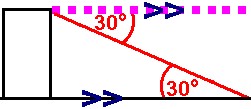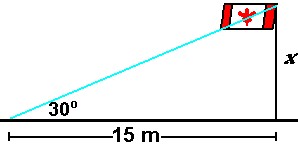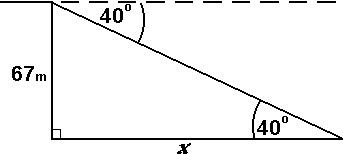Something that they might often refer to is what is called Angles of Elevation, or Angles of Depression.
When using angles of elevation or depression, it is important that we must first understand what is going on in the question that is being asked. Identification of the key pieces of the question is essential in understanding (and ultimately solving) the question.
We must then mentally, or physically (drawing) picture what is happening in the situation, and carefully plan out how we can approach the question. Very often it is easier to understand a question if a picture is provided, or if we have enough data to sketch a diagram ourselves.
Often, when solving these types of questions, more steps need to be used in order to completely solve the question. Logical reasoning must often be employed.
Angles of Elevation
Angles of elevation occur when something or someone is looking up from some kind of horizontal. The path of which their gaze follows is called the line of sight.

Angles of Depression
Angles of Depression are a little more complicated than Angles of Elevation, because more logical reasoning is needed.
When solving a question involving angles of depression, it is crucial to understand where the angle falls into play.
Angles of depression involve someone or something looking down at a certain angle, with their gaze being the line of sight. However, it is necessary to realize that a horizontal is being created, and that geometric patterns are needed to help solve the question.


When a question involving angles of depression is given, it is important to remember this geometric property. The angle of depression will always be an angle of depression from the horizontal.
Example 1: The angle of elevation from the ground to the top of a flagpole 15 meters away is 30°. To the nearest meter, how tall is the flagpole?
Step 1: Draw a diagram to find out what is happening in the question.

We need to solve to find out how tall the flagpole is, so that is our unknown side. We know the angle, and we know one of the sides. Therefore, we will be using the trigonometry ratio, tangent.
tan 30° = x/15
15 (tan 30°) = x
x = 8.66
Therefore, the flagpole is 9 meters tall.
Example 2: The angle of depression to the bottom of a canyon 67 meters deep is 40 °. To the nearest tenth of a meter, how far across does the canyon stretch?
Again, start by drawing a diagram. Remember, the angle is 40° from the horizontal. We can also use the Z-pattern to determine an angle on the inside of the triangle.

We can now use a trig ratio to determine how far across the canyon stretches.
We have the option of using one of two trig ratios: tangent or cotangent - either way, we will obtain the correct answer. Let's use tangent.
tan 40° = 67/x
x (tan 40°) = 67
x = 67/(tan 40°)
x = 87.46 m
x = 87.5 m
Therefore, the canyon stretches 87.5 m across.
Practice Questions
Page 509 #1, 4, 6, 9, 12